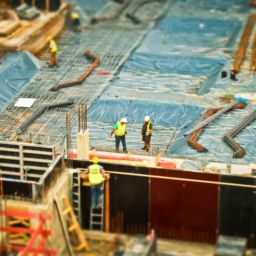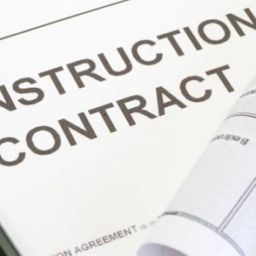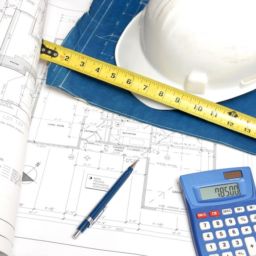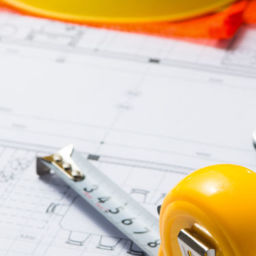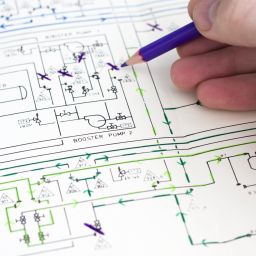
How to Prepare a Bill of Quantities
A bill of quantities is a document used in the construction industry that itemizes all the parts, materials, and labour that are required to complete a project. The bill of quantities details the specific terms of a contract and allows the contractor to accurately price each type of work.
The bill of quantities is important for both parties involved in the project and is the first step in determining the budget. Here are some ways to create a bill of quantities.
Calculation of working hours
Bill of Quantities is the study of works. It is a list of works with a detailed description, including the place of execution, the basis for determining the detailed description, and the basic measurements of each work. The bill of quantities also indicates the basic prices of materials and labour inputs. It is used as a tool for construction planning and cost analysis. Here, the breakdown of labour, materials, and equipment is crucial.
The calculation of man-hours is an important factor in winning a bid and charging for completed work. Estimating the number of man-hours is critical to a successful contracting business. The first step in calculating man-hours is to break down the project into its individual components. For example, if a project includes building an apartment complex, you would need to estimate the number of man-hours needed for all elements of the job. Then, you would multiply the number of workers assigned to a specific task by the time it takes to complete it.
Once this information is in the system, the hours and quantities can be reviewed online, or printed out. There are several programs for this. Lots of estimating programs allow you to review your entries prior to posting them to the system. Most of this software also allows you to post hours and quantities as you progress through the build stage and enables you to view actual hours worked on a job. You can also print a report of the actual hours worked to compare against the estimate you put in at the tender stage.
If you’re a contractor, tracking worker time is critical for your business. Using a time clock and recording hours in a written timesheet can help. Just be sure to check your records, because your company may be audited periodically and you’ll have to justify your hours. Once you’ve figured out how many hours your workers spent on the job, you can calculate their rate. The hourly rate of a construction company will vary depending on the nature of the project and the amount of equipment.
Estimation of the total budget for materials
The estimation of the total budget for materials is a key part of the budgeting process. This budget will determine how much material is needed for each production stage. The budget for direct materials is usually presented in a quarterly or monthly form and will contain a significant portion of the total costs for a production phase. This budget must be compiled with care, as an incorrect calculation may lead to excessive cash requirements. To make it more accurate, use historical percentages and consult with purchasing personnel or engineers with field experience.
When determining the cost of raw materials, consider the cost of labour and supplies. This cost will include the salaries of team members and any contractors. Materials costs are also important to have, as well. Travel expenses include hotel stays, trips to remote work sites, and research expenses. Indirect costs refer to resources not explicitly allocated to the project, such as time, money, and effort. For the project’s materials budget, a material cost estimate should include a detailed description of how much is needed for each type of material.
When estimating a project’s cost, it is important to include every aspect of the project. Ask your team how they think it will be delivered, why, and how to achieve the outcome. Asking probing questions will uncover any assumptions that are unrealistic. Unexpected costs are the biggest dealbreakers for any project, and it is crucial to factor in any potential risks, uncertainty, and changes in schedule. These factors may make it difficult to estimate a project’s cost accurately.
A detailed estimate of a construction project will be much more accurate than an order-of-magnitude estimate. For instance, the construction of a complex office building may involve hundreds of thousands of labour hours or even millions of £ or $. The engineering manpower and skilled labour required for the construction process can be enormous and drive costs up even further. In these situations, it is critical to rely on professional judgment to estimate the total budget for materials.
Estimation of the total budget for labour

Next, calculate how many employees you will need for each task. This information can help you determine the average monthly cost of labour. You can also divide the total cost by the number of employees you have.
Once you have a good idea of the costs, you can break these down into monthly quotas. Once you know how much each person will cost, you can estimate your total budget for labour.
If you are paying a £15 per hour employee, that person will work for 2,080 hours in 52 weeks. That’s about £31,200 (pre-tax) a year. In addition to wages, you’ll also pay any taxes, general liability, workers’ compensation, and other benefits.
The cost of labour is the largest expense a business can incur, but there are other costs, too. The total amount you pay an employee will depend on these other factors. First, you need to calculate their gross pay per hour.
Then, you must estimate your labour costs. Once you know what each activity is going to cost, you can determine how much labour it will cost your company on the whole for the project.
Contingency sums in a bill of quantities
Often, a contingency sum in a bill of quantities is used to cover unexpected costs, such as unforeseen expenses, and other events. The contractor must be aware of these situations, as they can lead to additional expenses or extensions of the project time. When there is an ambiguity in a bill of quantities, the contractor should disclose it to the client to try and iron it out before anyone signs on the dotted line.
A contingency sum is money allocated to a particular item or element of the work. A contingency sum is not included in a bill of quantities usually but elsewhere in the spreadsheet, usually on another tab. Contingencies can be allocated to any item in the BoQ at the request of the contract administrator.
Common mistakes made while preparing the bill of quantities
In construction, preparing a bill of quantities is a necessary part of the tendering process. It offers an accurate list of the items required for the project. It includes both measured and calculated amounts for all materials. The bill of quantities should be prepared following a set methodology that reduces the chances of mistakes. A minor mistake in the bill of quantities can impact the entire project, resulting in delays and losses. It could also make your project too expensive, resulting in your losing the bid.
Discrepancies in the bill of quantities can stem from a number of different reasons. Some errors are related to inaccuracy in measurements. A quantity surveyor may double count items because he has an inaccurate understanding of the method used to perform the work. He may also make an incorrect assumption based on past performance or late changes in the process. The list of mistakes made in a bill of quantities may seem endless, but there are some common causes.
Samuel Hitch was recently interviewed for an article about the Rising Costs Of Construction, you can read it here if you are interested.




